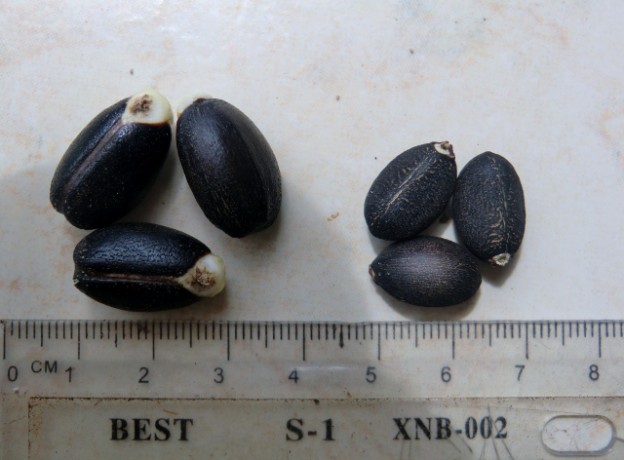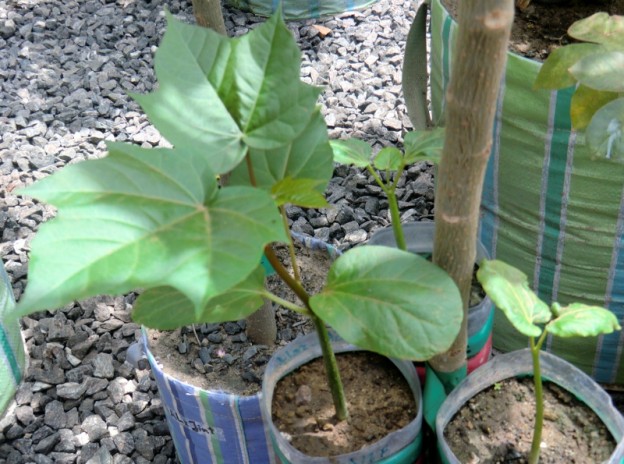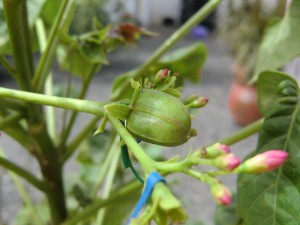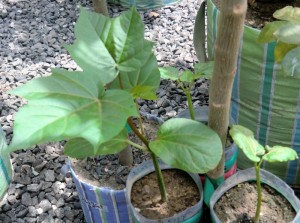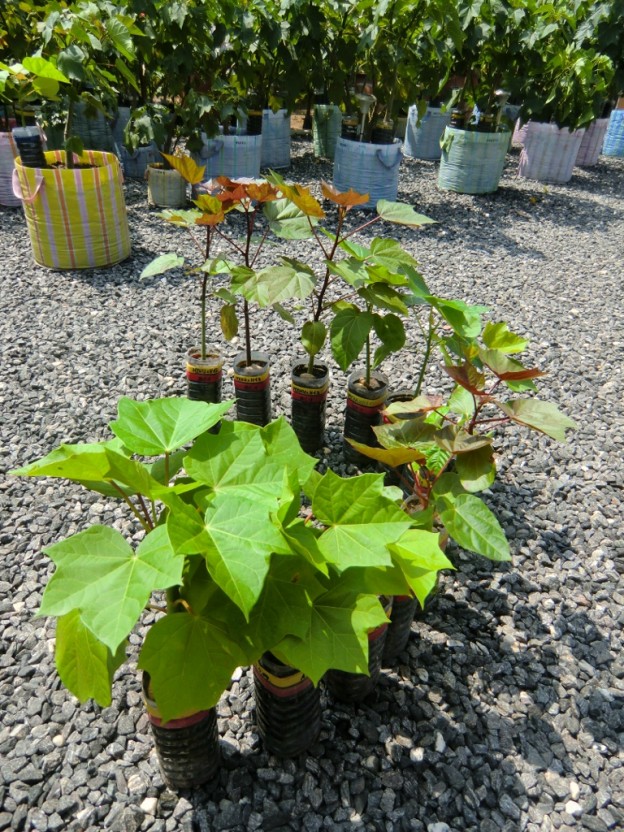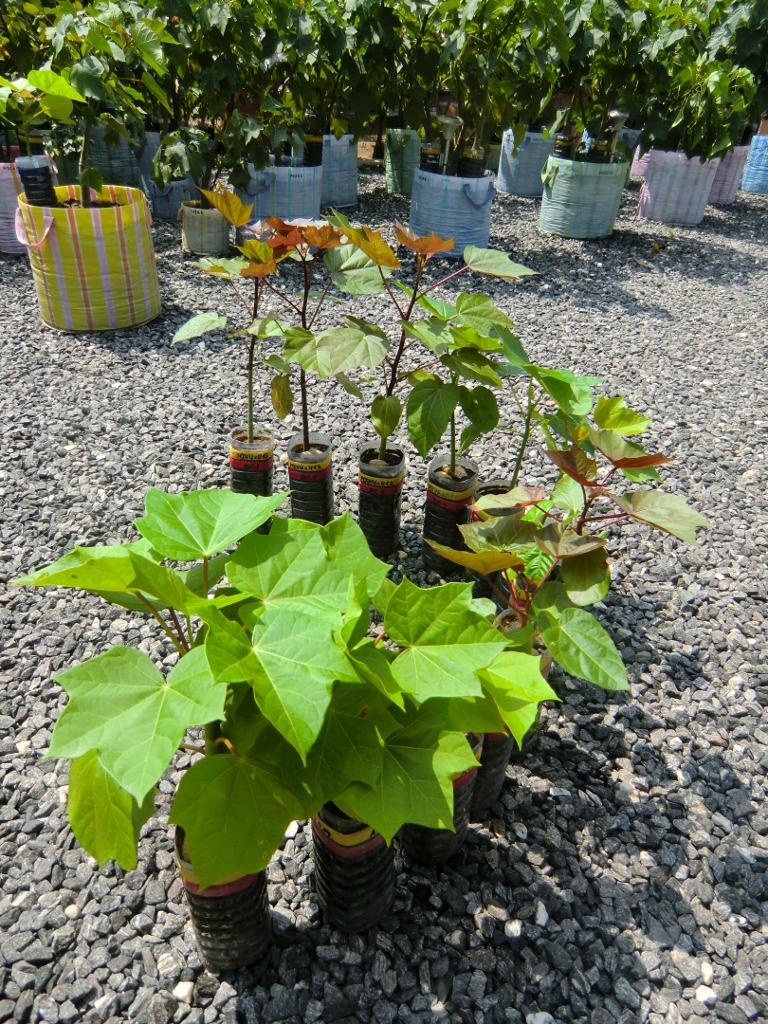 It has been only a month since we last wrote about heterosis in Jatropha breeding. However, we had not seen then, what we have seen now…
It has been only a month since we last wrote about heterosis in Jatropha breeding. However, we had not seen then, what we have seen now…
We have harvested a first batch of Jatropha seeds from the intraspecific hybrid exhibiting by far the strongest heterosis effects in leave size and height. And we were up for a real surprise.
We had recently seen 2 scientific reports on heterosis trials with Jatropha in South East Asia describing maximum positive heterosis in seed weight of up to 25%. We therefore never expected to see our highest 100-seed weight increasing so much. Extrapolated from 20 harvested seeds it slightly exceeds 110g. Size can be compared well in the picture above with control being a typical average size seed at a 100-seed weight of 56g.
Our own findings are completely in line with the above mentioned reports, while showing even further potential. We still have to cross those parental lines in our possession with the greatest distance according to our genetic map. As all available results point to the very strong positive correlation between heterozygosity and heterosis in intraspecific Jatropha hybrids we expect that our latest findings can easily be exceeded once all our planned hybrid crosses have fruited.
This latest success supports our ongoing planning for a dedicated heterosis breeding sub-program which could allow for stable, highly superior F1 hybrids within less than 2 years.
